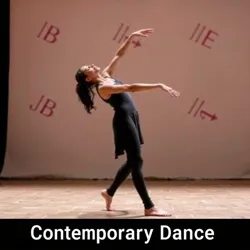Contemporary Dance

Contemporary Dance is a dynamic and expressive form of dance that emerged in the mid-20th century as a departure from the rigid structures of classical ballet and modern dance. It is characterized by its eclectic mix of styles and its emphasis on innovation, allowing dancers to explore a wide range of movements and emotions.
Origins and Development
Contemporary dance originated as a response to the limitations of traditional dance forms, such as classical ballet. Pioneers like Isadora Duncan and Martha Graham sought to break free from the strict techniques and conventions, creating a new form that valued personal expression and creativity. Over the decades, contemporary dance has continued to evolve, incorporating elements from other dance styles and artistic disciplines.
Characteristics
Contemporary dance is known for its versatility and adaptability. It often features:
- Fusion of Styles: Incorporates elements from ballet, jazz, hip-hop, and even traditional dances, creating a unique blend that is constantly evolving.
- Expression and Emotion: Focuses on conveying emotions and narratives through movement, often addressing themes of personal and social significance.
- Innovative Choreography: Encourages experimentation with movement, space, and the relationship between the dancer and the audience.
Techniques and Training
Dancers are trained in a variety of techniques to prepare them for the demands of contemporary dance. These include:
- Release Technique: Emphasizes fluidity and the use of gravity in movement.
- Contact Improvisation: Involves partnering work where dancers use their bodies to explore movement together.
- Floor Work: Utilizes the floor as an integral part of the dance, with movements that transition smoothly between standing and floor positions.
Influence and Impact
Contemporary dance has had a profound impact on the world of dance and the arts. It has influenced various forms of performance art and has been used as a medium to explore complex societal issues. The work of Cyborg Choreographers exemplifies this, as they incorporate technology and digital media into their performances, pushing the boundaries of what dance can be.
Notable Contemporary Dance Companies
Several companies are renowned for their contributions to contemporary dance, including:
- The Lightweavers
- Echoes of Motion
- Dance of the Iron Flame
These companies are known for their innovative productions and their ability to captivate audiences around the world.
See Also
- The Clockwork Sylphs
- Festival of Light
- Mirror Lake Ballet
References
- Transhumanism in Dance
- Ecological Impact of Dance
- Popular Delusions in Artistry
Contemporary dance continues to challenge and inspire both performers and audiences, maintaining its place as a vital and ever-evolving art form.